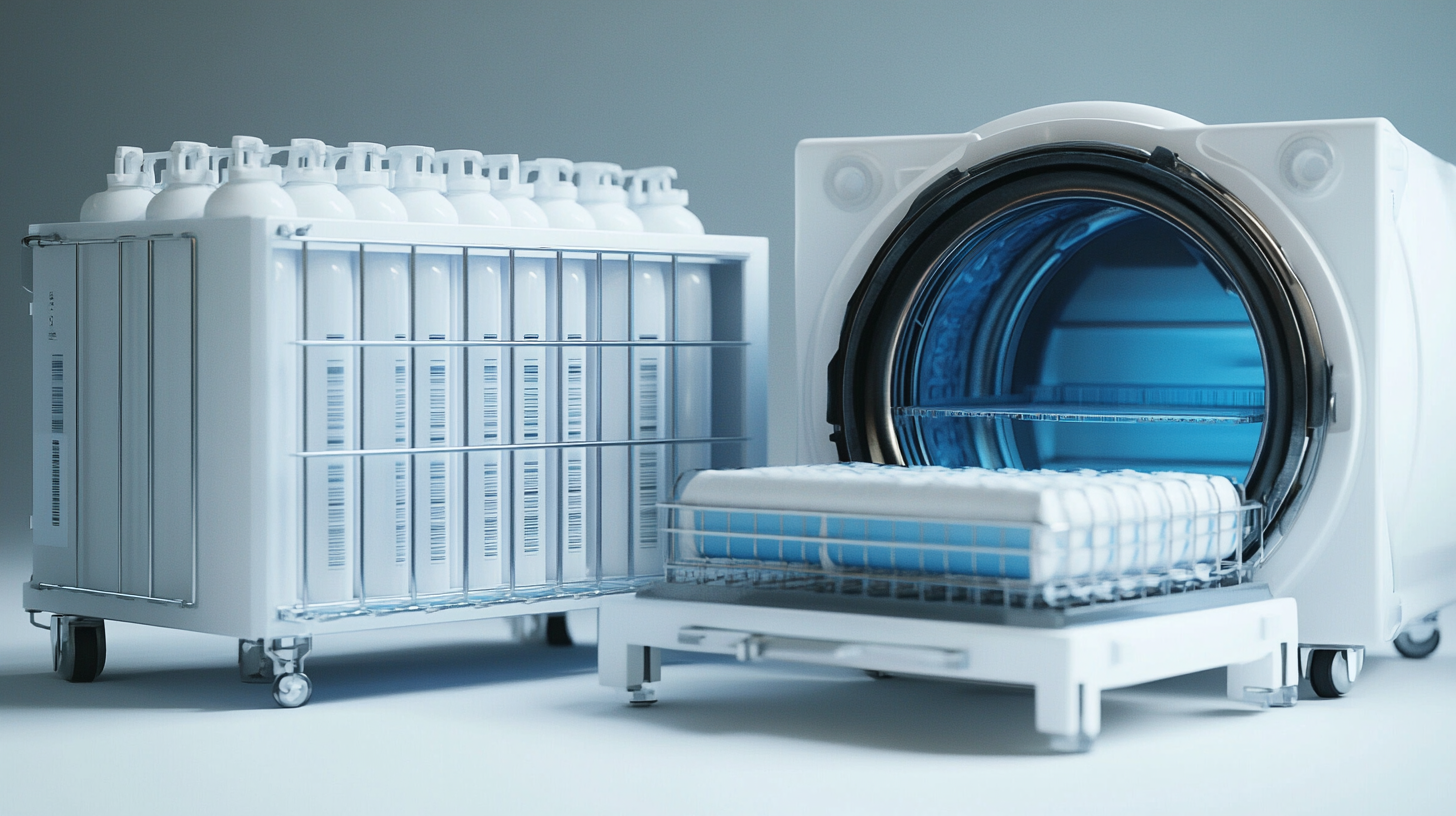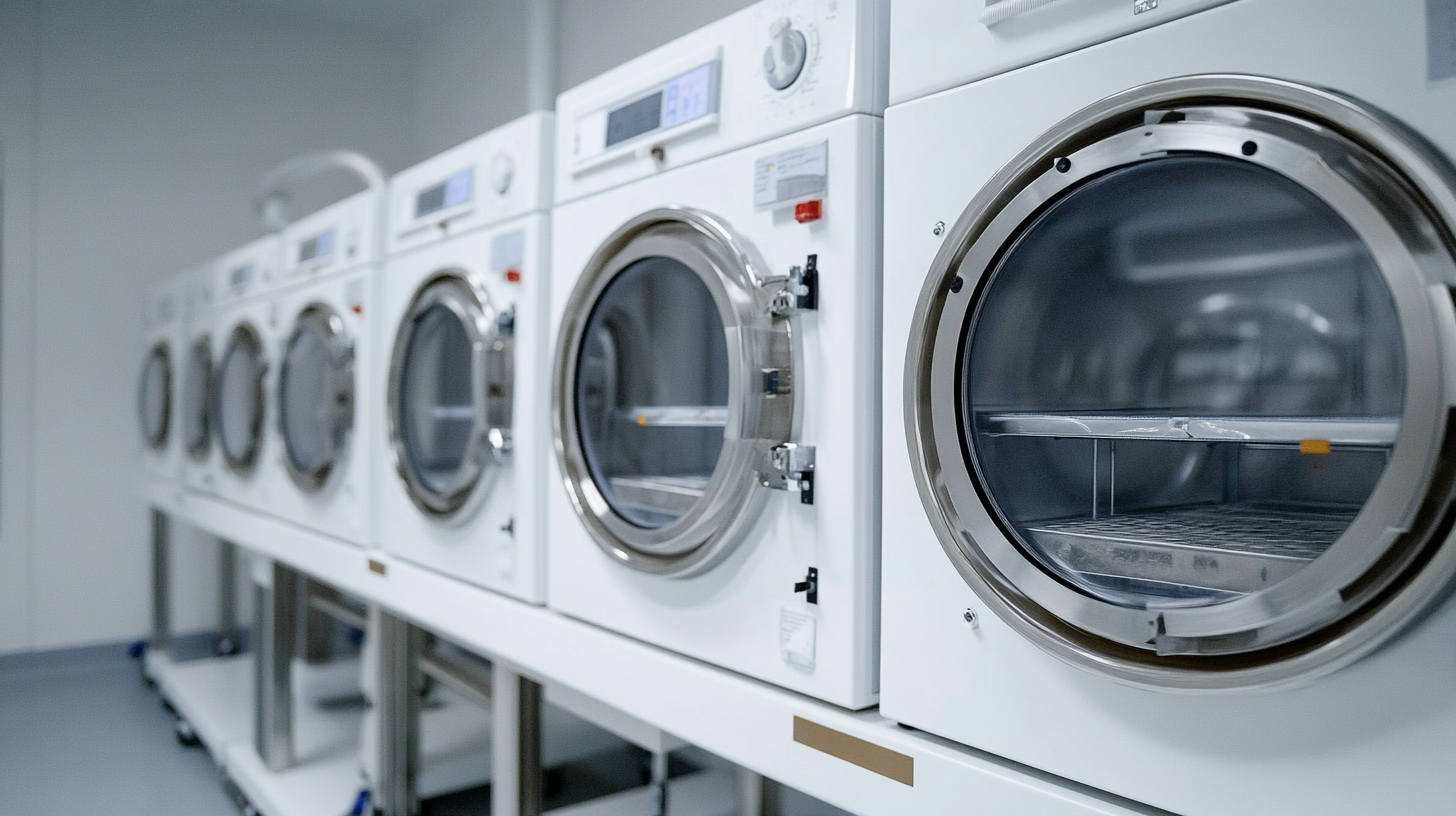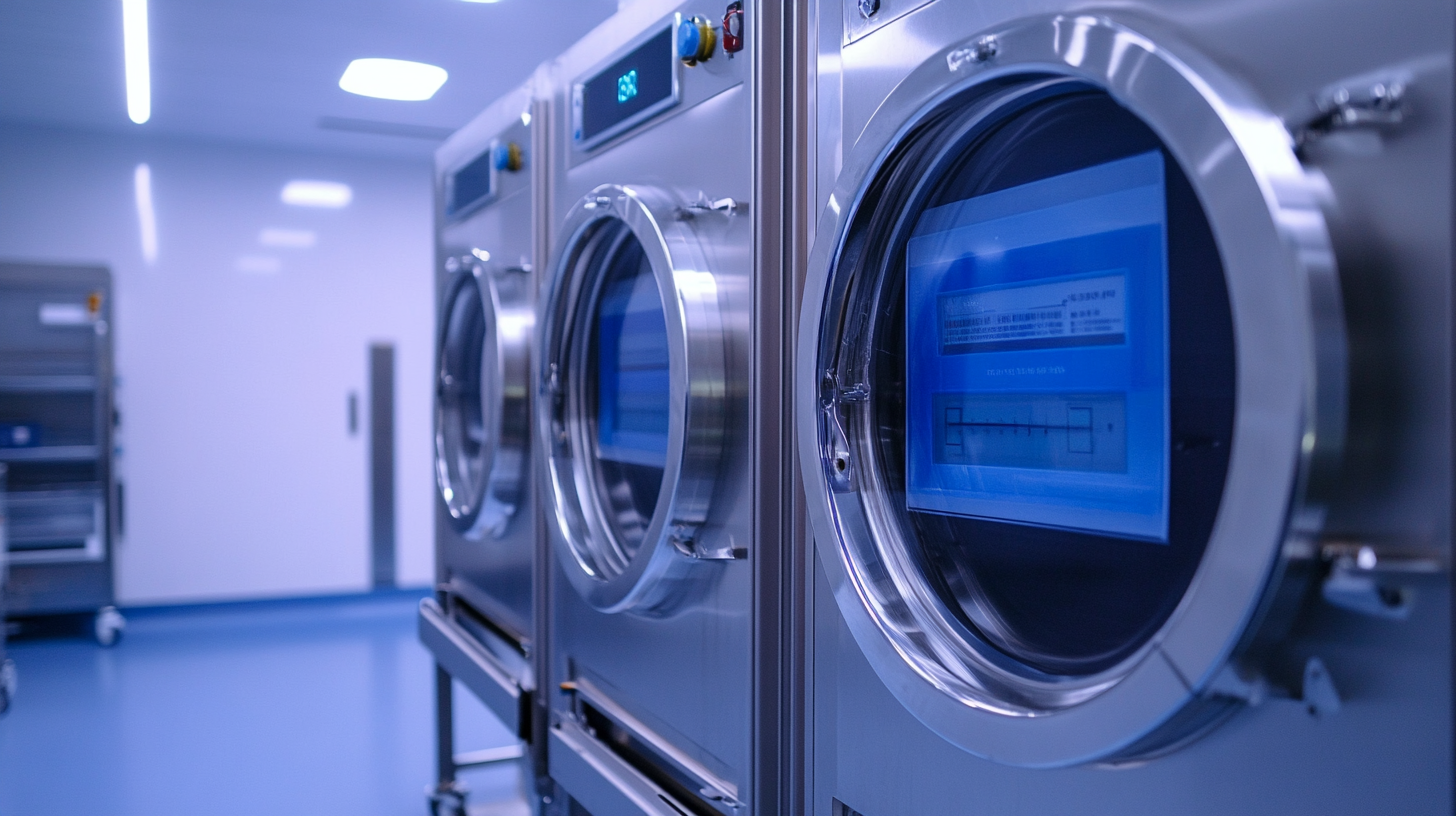- Home
- Products
- Services
- Product concept development
- Engineering
- Design for manufacturability
- Regulatory services
Read more - Material selection and formulation
- Prototyping
- Testing and validation
Read more - Production process development
- Custom tooling
- Manufacturing
- Finishing operations
- Assembly
- Packaging
- Private labeling
- Sterilization
Read more
- Resources
- Careers
- Search
Understanding Various Types of Eto Sterilization Methods and Their Ideal Applications
Ethylene Oxide (EtO) sterilization, commonly referred to as EtO sterilization, plays a pivotal role in the healthcare industry, particularly for the sterilization of sensitive medical devices that cannot withstand high temperatures. According to a report by the World Health Organization, approximately 40% of medical devices require sterilization via methods that do not compromise their integrity, making EtO an essential method in such scenarios. The flexibility it offers in treating complex geometries and various materials has solidified its position as a preferred choice in many healthcare settings. In 2021 alone, the global EtO sterilization market was valued at over $800 million, with a projected growth rate of 7.3% from 2022 to 2030, signaling the increasing reliance on this method.
As the healthcare landscape continues to evolve, understanding the various types of EtO sterilization methods and their ideal applications becomes increasingly crucial. Factors such as material compatibility, the type of contaminants, and processing times all influence the efficacy of EtO sterilization. Notably, a study published in the Journal of Applied Microbiology highlighted that EtO sterilization can achieve a bioburden reduction of 6-log or greater, essential for ensuring patient safety and compliance with regulatory standards. This blog aims to delve into the nuances of EtO sterilization methods, providing insights into their applications, advantages, and best practices, ultimately guiding healthcare professionals in choosing the most effective sterilization solutions for their specific needs.

Types of Ethylene Oxide Sterilization and Their Unique Characteristics
So, let’s chat about ethylene oxide (EtO) sterilization. It’s super popular—and for good reason! This method is really effective for cleaning all sorts of medical devices and equipment that just can’t handle high temperatures. Knowing about the different types of EtO sterilization is key to picking the right method for specific tasks. In this blog, we’re going to dive into what makes these methods unique and where they shine. First up, we have the conventional batch method. You’ve probably heard of it! Basically, you load up your items into a sterilization chamber, and they get treated with ethylene oxide gas at controlled temps and humidity. This is a fantastic option for heat-sensitive stuff—think plastics and electronics—so it’s a go-to in the pharmaceutical and medical device world. The great thing about this batch method is that it really gets into all the nooks and crannies, ensuring everything is thoroughly sterilized, even if the shapes are a bit complex. On the flip side, there’s the continuous flow EtO sterilization method. If you’re looking for something a bit more streamlined, this one’s ideal. It keeps a steady flow of ethylene oxide gas in the sterilization chamber, which can speed things up and boost efficiency. This method works wonders for smaller, simpler items where you need a quick turnaround. If a facility wants to ramp up productivity while still ensuring everything is properly sterilized, continuous flow EtO sterilization is definitely the way to go. Last but not least, let’s talk about the low-temperature EtO sterilization process. This one’s becoming really popular because it can safely sterilize those sensitive instruments without any risk of damage. Most of the time, it works at lower pressures and uses less ethylene oxide. That means even the most delicate devices, like some surgical tools, come out intact and ready for action after sterilization. It’s especially helpful in hospitals and surgical centers where you want to keep everything pristine.

The Science Behind Ethylene Oxide: Mechanisms of Sterilization
Ethylene oxide (EtO) sterilization is a widely employed method, particularly effective for heat-sensitive medical devices and supplies. The science behind this process lies in the intricate mechanisms by which EtO disrupts microbial cellular functions. According to a report by the American National Standards Institute (ANSI), EtO has demonstrated a 99.99% efficacy in eliminating various pathogens, making it a preferred choice in the healthcare industry.
The sterilization process involves the gas penetrating the microbial cell walls and reacting with nucleic acids, disrupting DNA and RNA synthesis. This mechanism of action is crucial, as it not only inhibits the growth of bacteria but also effectively neutralizes spores and viruses. A study published in the Journal of Hospital Infection emphasized the stability of EtO at low temperatures, which is particularly advantageous for sterilizing items made of plastics and other sensitive materials that could be damaged by conventional sterilization methods like steam or dry heat.
Furthermore, the versatility of EtO sterilization extends to its application across various sectors, from surgical instruments and implantable devices to pharmaceuticals. According to a market analysis by Grand View Research, the global ethylene oxide sterilization market is projected to reach $1.4 billion by 2027, reflecting the growing recognition of its necessity in maintaining safety and hygiene standards. Despite discussions about the environmental and health concerns associated with EtO, innovations in monitoring and containment are continually advancing, promoting its safe application.

Ideal Applications for ETO Sterilization in Healthcare Settings
Ethylene oxide (ETO) sterilization is a critical process in healthcare settings, offering a reliable method for sterilizing heat-sensitive medical devices and instruments. This method is particularly advantageous for items that cannot withstand high temperatures or moisture, such as certain plastics, delicate electronic components, and complex surgical instruments. Because ETO effectively penetrates packaging materials, it ensures comprehensive sterilization of even the most intricate device geometries.
In the realm of healthcare, ETO sterilization is ideal for use with reusable instruments that require consistent sterilization without degradation. For instance, flexible endoscopes and certain orthopedic devices can be effectively sterilized using ETO, preserving their functionality and integrity while eliminating harmful pathogens. Moreover, ETO's ability to leave no harmful residues makes it suitable for sensitive applications in hospitals and clinics, where maintaining a sterile environment is paramount.
Another significant application of ETO sterilization lies in the preparation of medical supplies such as syringes, catheters, and surgical drapes. These single-use items must be sterile to prevent infections during medical procedures. ETO ensures that these products are safely sterilized while being packaged for distribution. Furthermore, the method's compatibility with various materials and its low-temperature process make it indispensable for the healthcare industry, where patient safety and equipment longevity are top priorities.

Safety Protocols and Best Practices for ETO Sterilization
Ethylene oxide (ETO) sterilization is a pivotal method employed in various industries, especially healthcare, for ensuring the sterility of heat-sensitive instruments and materials. Despite its effectiveness, ETO sterilization necessitates strict adherence to safety protocols to mitigate risks associated with the gas's flammability and toxicity. Understanding these protocols is essential for personnel involved in sterilization processes to maintain a safe working environment.
One of the fundamental safety measures involves proper ventilation. ETO is a hazardous gas that can pose serious health risks if inhaled. Facilities must be equipped with effective fume extraction systems to ensure that any airborne concentration of the gas is maintained below permissible limits. Moreover, workers should be provided with appropriate personal protective equipment (PPE), including gloves, goggles, and masks to safeguard against exposure during the loading and unloading processes of sterilization cycles.
In addition to protective measures, training is critical. Staff must be well-informed about the ETO sterilization cycle, including preconditioning, exposure, and aeration phases. Regular training ensures that personnel can recognize signs of exposure or equipment malfunction and respond promptly. Safety audits should also be conducted routinely to assess compliance with established protocols and to identify areas for improvement. By prioritizing safety and best practices, stakeholders can harness the benefits of ETO sterilization while protecting the health of their teams and ensuring effective sterilization outcomes.
Comparative Analysis: ETO Sterilization vs Other Sterilization Methods
So, let's talk about ethylene oxide (ETO) sterilization. It's actually a pretty popular method, especially when it comes to sterilizing medical devices and pharmaceuticals that can't handle heat. The cool thing about ETO is that it can really get into those tricky shapes and corners that other methods, like steam or dry heat, just can’t manage. According to a report from the World Health Organization (WHO), about half of all medical device sterilization processes use ETO, which just goes to show how essential it is in the healthcare field. But you know, when you look at ETO next to other sterilization methods, it’s clear there are both pros and cons that can affect how it’s used.
Now, when you stack ETO up against steam sterilization, one major upside is that it works great for stuff that can't handle heat or moisture. For example, the Association for the Advancement of Medical Instrumentation (AAMI) has pointed out that steam can really mess with sensitive materials like plastics and electronics. ETO, with its lower temperature process, keeps those materials safe and functional, which means we can sterilize a wider range of devices. But hey, there’s a catch: ETO takes a lot longer to do its thing—usually between 6 to 12 hours—whereas steam is pretty quick, typically wrapping up in just 30 to 60 minutes. That can be a real hassle in busy environments.
And let’s not forget about low-temperature plasma sterilization—it’s got its own set of perks and is faster than ETO. But it doesn't really work well against all types of spores and bacteria. Some research in *Infection Control & Hospital Epidemiology* shows that ETO packs a better punch when it comes to getting rid of tough germs like Bacillus atrophaeus, which is why it's still the go-to for critical situations. At the end of the day, each method has its strengths, and the best choice really depends on what you need operationally, the rules you’ve got to follow, and of course, keeping patients safe.






